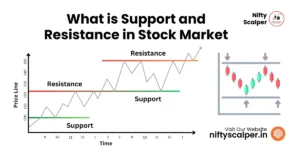Title: Leveraging Events: Trading Options Around Earnings and Economic Releases
Introduction:
Events such as earnings reports and economic releases can create significant market volatility, offering opportunities for options traders to capitalize on price movements. This guide explores strategies for effectively trading options around earnings and economic events, providing insights into preparation, risk management, and potential approaches to leverage these market catalysts.
1. Understanding the Impact of Events:
Market Volatility Surge:
- Earnings Reports: Companies’ financial results can lead to substantial price swings.
- Economic Releases: Key economic indicators may cause market reactions.
2. Options Strategies for Earnings:
1. Long Straddle:
- Objective: Capitalize on significant price movements.
- Execution: Simultaneously buy a call and a put option with the same strike and expiration.
2. Short Straddle:
- Objective: Benefit from minimal price movement.
- Execution: Simultaneously sell a call and a put option with the same strike and expiration.
3. Iron Condor:
- Objective: Generate income in a range-bound market.
- Execution: Combine a bull put spread and a bear call spread.
3. Options Strategies for Economic Releases:
1. Directional Strategies:
- Objective: Anticipate the market’s reaction to economic data.
- Execution: Buy call options for positive outcomes, put options for negative outcomes.
2. Straddle or Strangle:
- Objective: Benefit from significant price movement.
- Execution: Buy a straddle (simultaneous call and put with the same strike) or a strangle (different strike prices) before the release.
3. Calendar Spreads:
- Objective: Capitalize on short-term volatility.
- Execution: Buy a short-term call or put option and sell a longer-term option of the same type.
4. Preparation and Research:
1. Earnings Calendar:
- Stay Informed: Use an earnings calendar to track upcoming reports.
- Prioritize Major Releases: Focus on significant economic indicators that can impact broader markets.
2. Historical Analysis:
- Review Past Movements: Analyze how the asset reacted to similar events in the past.
- Volatility Patterns: Identify patterns in implied and historical volatility leading up to and following events.
5. Risk Management:
1. Position Sizing:
- Allocate Capital Wisely: Determine the size of each position relative to your overall portfolio.
- Diversification: Avoid concentrating too much capital on a single event.
2. Set Stop-Loss Orders:
- Define Exit Points: Establish predetermined stop-loss orders to limit potential losses.
- Adapt to Market Conditions: Adjust stop-loss levels based on changing market dynamics.
6. Execution Timing:
1. Before or After the Event:
- Pre-Event: Anticipate volatility and potential price movements leading up to the event.
- Post-Event: React to the market’s initial response and potential follow-through.
2. Option Expiry Selection:
- Align with Event Timing: Choose option expirations that align with the event date.
- Account for Potential Delays: Consider any potential delays in information release or market reactions.
7. Liquidity Considerations:
1. Choose Liquid Options:
- Efficient Execution: Trade options with sufficient liquidity for efficient order execution.
- Manage Bid-Ask Spreads: Be cautious of wide bid-ask spreads, especially in illiquid options.
Conclusion:
Trading options around earnings and economic releases can be lucrative but requires careful planning and risk management. By understanding the potential impact of events, employing appropriate options strategies, and staying informed through thorough research, traders can position themselves to take advantage of market opportunities. Implementing disciplined risk management, adapting strategies based on market conditions, and considering liquidity factors contribute to a well-rounded approach to trading around events. Remember, staying informed and continuously learning from each event will enhance your ability to navigate and capitalize on these market catalysts successfully.



